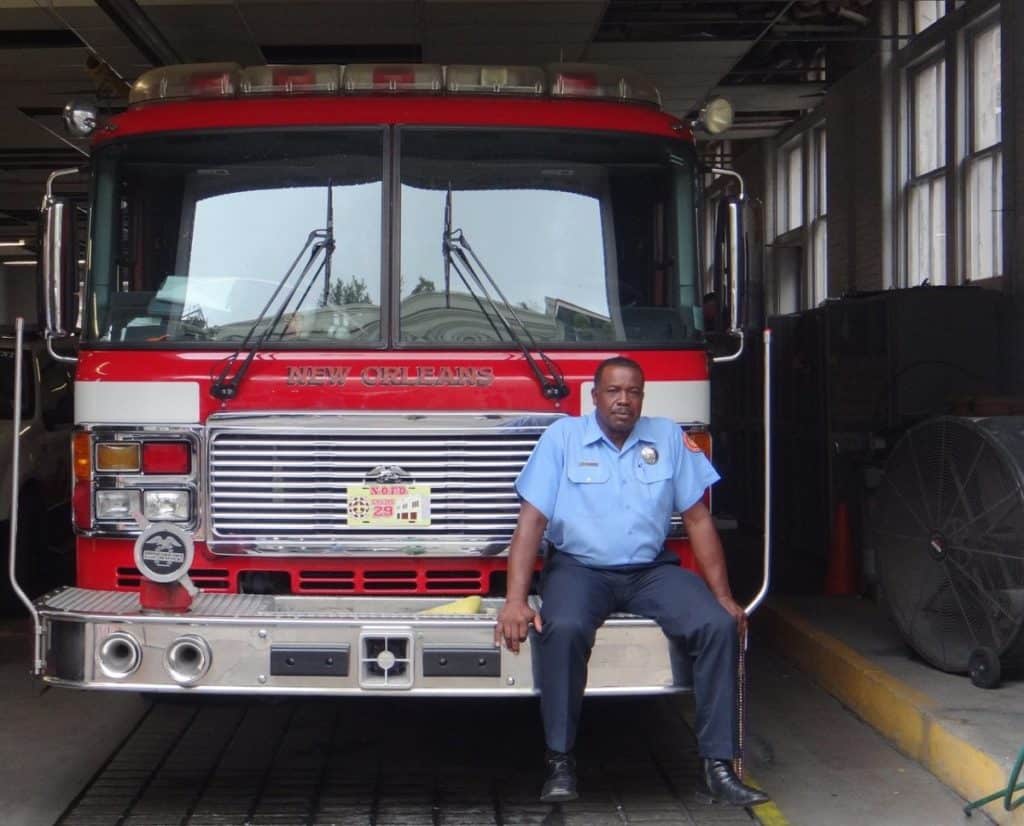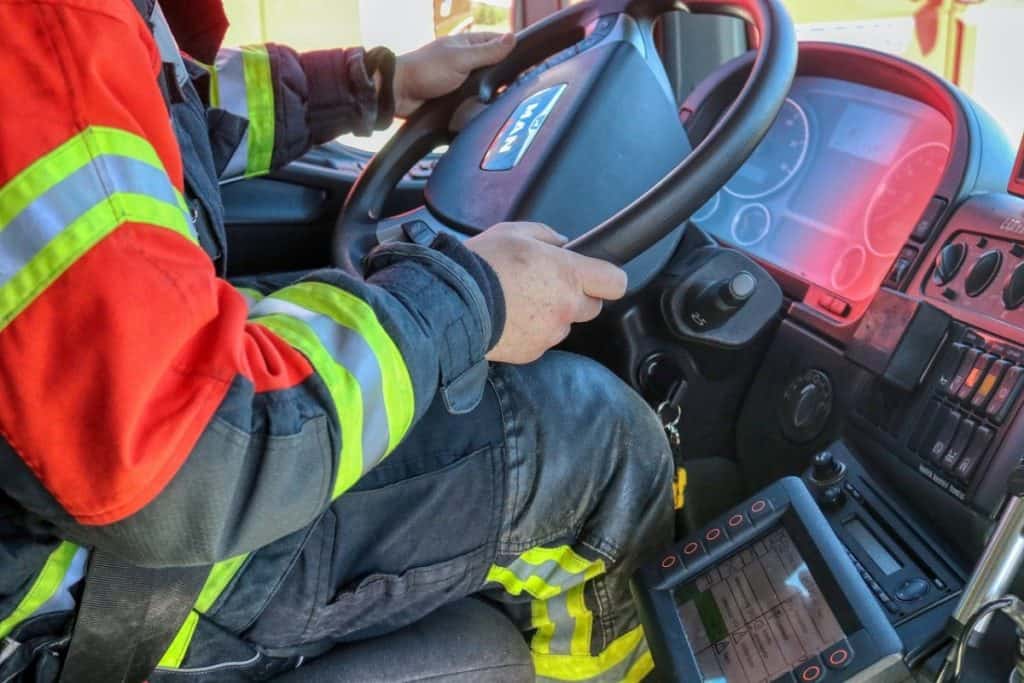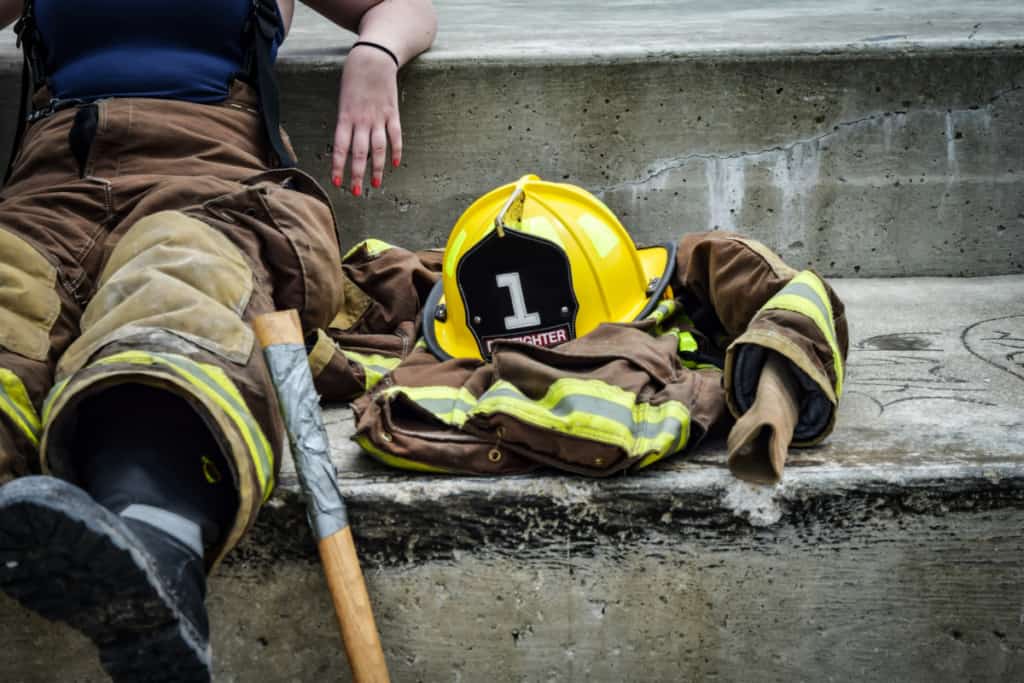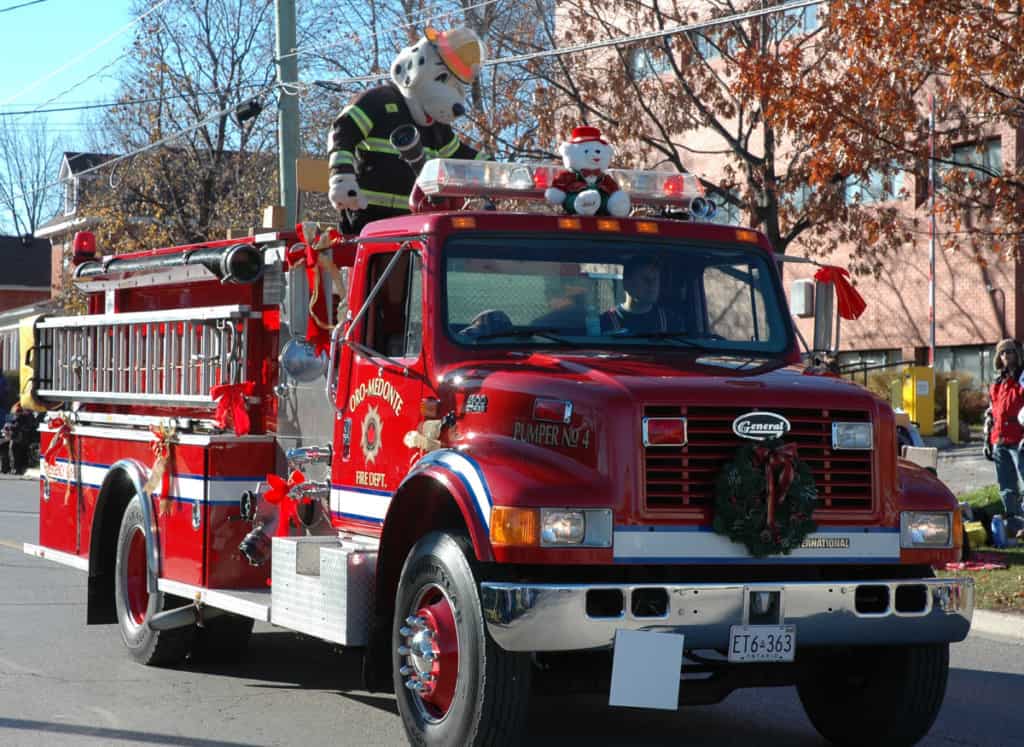The requirements for becoming a basic firefighter are laid out pretty simply by each fire department. But, the different roles that you can obtain once employed can vary by location and department. Along with this, the requirements to become a driver/engineer (firefighter driver) can vary as well. So, how do you become a firefighter driver?
In order to become a firefighter driver or engineer, you must first be hired by a department as a basic firefighter. After a set amount of time, you can begin working toward driver training, certification, testing, and a promotion to the position of driver/engineer.
Driving a fire truck sounds like a cool job, and it is, but there’s a lot more to this type of position than just driving from Point A to Point B. So, we’re going to go over what’s actually expected of a driver/engineer, so you can determine whether this is really something you want to do!
Your # 1 priority is keeping your family safe. As a firefighter, I recommend everyone has updated smoke detectors that don’t require battery changes, like these ones from Kidde, a fire extinguisher, like this one from Amerex, and a fire escape ladder if you have bedrooms above the first floor, I recommend this one from Hausse.
Also read: Do All Firefighters Have to Drive the Truck?
What is a Firefighter Driver/Engineer?
Firefighter driver/engineer is the title used to describe the firefighter position that is in charge of driving fire apparatus (engines, trucks, squads), pumping water to extinguish fires, operating aerial ladders and other related tasks. They can also be called drivers, driver/operators, or chauffeurs. This position usually requires testing and a promotion to obtain.
Here is a video that explains the position of Driver/Engineer:
Drivers are highly-skilled individuals that are required to hop behind the wheel of a 40+ foot long fire truck and drive safely but swiftly through the streets toward an emergency call. This job requires an incredible amount of attention to detail, swift thinking, and impressive driving skills.
Yet, the job also comes along with plenty of other responsibilities. As a driver, you’ll play a vital role once your truck arrives at the scene of an emergency. You’ll also need to be able to assess a fire truck’s need for maintenance and repair.
Displaying Driving Skills
As you can probably imagine, there’s a great amount of skill that goes into driving a fire truck. Unlike your car, SUV, or pickup truck, a fire truck can measure in at over 40 feet long and typically weighs over 50,000 pounds.
There are plenty of unique driving skills needed to be successful as a driver, and much more than just being able to hit the gas and steer. Here’s a look at what is expected of a driver/engineer candidate.
- Ability to envision a route. When you’re on an emergency call, the driver/engineer is responsible for getting the crew and apparatus safely to the call. While many modern fire departments use technology like GPS to help this process, there is nothing that can replace an experienced driver’s knowledge of their district.
- Great spatial awareness. Given the sheer size of a fire truck, spatial awareness is one of the greatest skills to have. You’ll need to be able to recognize your physical position, being able to recognize low clearances, and even back the fire truck into the station without hitting any nearby objects. With the size and power of these machines, that is a lot of responsibility.
- Vehicle control. When you’re responding to an emergency at high speeds, you’re going to need to avoid other vehicles out on the road, make tight turns, and avoid hitting other stationary objects. It’s also important that you’re able to maneuver the vehicle within tight spaces, so performing 3-point-turns and parallel parking may be necessary.
- Safe driving practices. You want to get to your truck to the scene fast, but you want to avoid risking safety at the same time. The ideal driver will have the perfect combination of being able to drive quickly, take turns safely, and arrive all in one piece.
Ultimately, speed is not as important as the ability to arrive at the scene safely without putting the public at risk. The specific skills that you’ll need to be proficient in include:
- Driving forward
- Driving backward
- Maneuvering turns and curves
- Staying left when driving on multi-lane roads
- Knowing the most direct route to your destination
- Parallel parking
- Turning around in small spaces
- Knowing the locations of local fire hydrants
- Understanding local traffic patterns
Being able to control a 40+ foot vehicle is very tough, so don’t be surprised if it takes you a bit longer to get these skills down. It’ll take a lot of practice and training on your part, but persistence will truly be key.
Arrival at the Scene
As a firefighter driver, your job doesn’t end as soon as you arrive at the scene. In actuality, driving to the scene is simply the beginning of your job as a firefighter driver. Here’s what you may be expected to do at the scene.
- Parking the truck strategically. When you arrive at the scene, you need to make sure that you’re parking in a spot that allows your crew the greatest opportunity. That could mean blocking off a few lanes of traffic to protect everyone from oncoming traffic and to allow for greater access to a scene, or parking directly in front of the nearest fire hydrant.
- Getting a water supply. While the rest of your crew is hopping out of the vehicle and preparing to attack the fire, it’s your job to supply the engine with water and attach the fire hose to the fire hydrant. At this time, you’ll also have to calculate the pressure needed in the attack hose, given the size and length of the hose, elevation changes, and other equipment used.
- Setting up the ladders. As your crew is getting ready, it’s your job to set up the ladders and make sure that you’re parked in a space that allows the ladder to reach the roof or the windows of the structure. You might also be required to set up lighting to make sure your crew can see what they’re doing while on the call.
A lot of people might think that the driver/engineer simply drives the truck. In fact, those in these positions have perhaps one of the most important jobs in the department.
You might be required to assume a leadership role when your crew responds to an emergency call when you’re a driver, as some fire departments require their driver to function as acting captains or lieutenants when needed. Therefore, make sure that you’re okay with this type of responsibility and have the leadership training and skills necessary to be successful.
Understanding Vehicle Maintenance
Being able to drive a fire truck is most important, but you’ll also need to understand how your fire truck works and keep track of its maintenance needs. After you spend some time behind the wheel of a fire truck, you’ll soon begin to realize what’s “normal” and what’s not.
So, as a firefighter driver, you’re going to need to frequently check:
- Fluid and fuel levels
- The functioning of electrical systems, coolants, and batteries
- Braking and light systems
- Tire treads and pressure
Most of these tasks will have to be carried out at least once per day (pre-trip inspection, required by the DMV), but some of these are also important to check every time you return to the station after a call. Otherwise, there’s a chance that you won’t notice a flat tire or low fuel until you’re loading up the truck to respond to another call.
Here is a video of a fire mechanic from the Dallas Fire Department talking about doing an “engine walk-around”:
You are also responsible for every piece of gear and equipment that is carried on the engine or truck. This can be a lot, as fire apparatus are basically giant, rolling toolboxes. This means knowing were everything is kept, knowing when someone takes a tool, and ensuring it all works as expected.
This further demonstrates the attention to detail required of drivers. There’s absolutely no room for shortcuts when it comes to this job, and not living up to your job’s responsibilities can be extremely dangerous.
How to Become a Fire Apparatus Driver: Requirements

So, now that you’ve decided that this is a career path you want to go down, it’s time to take the first steps. The first thing you should do is become a basic firefighter by getting hired with a fire department which may include: passing the written and physical exams, scoring well on the interviews, as well as graduating from the fire academy.
After that, you need to look into your state’s requirements for driving fire apparatus. A few states require a commercial driver’s license (CDL), but most states have now moved toward a firefighter endorsement which includes passing a practical driver’s test developed at each department. Once you complete your training, you’ll continue to practice until you’re ready to hit the road.
Becoming a Firefighter First
Before you can pursue a career as a driver/engineer, you need to become an actual firefighter.
Each state and/or fire department has its own requirements when it comes to the qualifications needed to become a firefighter. Take a look at the most basic requirements you’ll need to meet.
- 18 years of age or older
- A high school diploma or equivalent (i.e., GED)
- Valid driver’s license in your state of residence
- Emergency Medical Technician (EMT) certification
- Physically, medically and mentally fit for the job
Once you meet these basic requirements, you’re on your way to becoming a firefighter. Here’s a look at the process of getting hired as a firefighter.
- Submit your application You need to find which departments are hiring. Govermentjob.org is a great resource for this. You need to submit your application in the time window required. Read: 7 Tips for Your Firefighter Application: Get the First Step Right
- Pass the civil service exam (written exam). The exam is typically anywhere between 100 and 150 questions and lasts less than three hours in total. The exam tests your reasoning, logic, and comprehension skills. You usually need at least an 80% on the exam to pass. Read: Firefighter Written Test: What to Expect and How to Prepare and The Best Firefighter Exam Prep Books and Tools
- Pass the physical exam. There are a few physical exams out there, but you’ll likely be taking the Candidate Physical Ability Test (CPAT). Over the course of 10 minutes and 20 seconds, you must complete eight different events that test your physical fitness and ability to perform specific firefighter tasks. This test is pass/fail. Read: 8 Tips for the Firefighter Physical Test: Passing the CPAT and The Fitness Requirements of a Firefighter-Explained
- Pass medical exams and background checks. Being a firefighter is an extremely demanding job and requires you to represent the community. So, you need to pass medical exams, physical exams, and a background check. Read: Can You Be a Firefighter with a Disability? What You Should Know and Can You Be a Firefighter with Past Drug Use?
- Graduate from the fire academy. The fire academy usually ranges from 10 to 24 weeks (depending on your state and department). During the program, you’ll learn about how to respond to an emergency call, improve your physical fitness, and participate in practice scenarios in actual structures. Read: Fire Academy 101: What to Expect and How to Prepare
Once you’re hired by a fire department, pass your probation period and express interest in becoming a driver, your fire chief will ask you to complete the required training and demonstrate why you’d be a good fit for this position.
For more in-depth information on the requirements and hiring process of becoming a firefighter, read:
How to Become a Firefighter: The Complete Guide
Do You Need a Commercial Drivers License (CDL)?
If you’ve done your research on how to become a driver, it might seem a little unclear when it comes to whether or not you need your CDL (Commercial Drivers License). This type of license has been required since 1986 for any drivers of large commercial vehicles.
The confusion comes with the fact that fire trucks are not necessarily considered commercial vehicles. With that said, firefighter drivers are usually exempt from needing a CDL as long as they’re completing their own station’s driver’s test. They will usually need to get a firefighter endorsement on their non-commercial driver’s license.
Read more about these requirements here: What is a Firefighter Endorsement?
However, you should check with your fire department regarding this potential requirement.
Complete Driver Training

As we touched on earlier, driving a fire truck requires a ton of attention to detail and the ability to adapt to an ever-changing environment. So, you most likely will have to pass a driver’s course approved by your station in order to be allowed to drive the apparatus.
That means you’re going to have to pass a driver training course specifically for fire trucks. In some states, this is a weeklong (40 hour) class called Driver 1A. This course usually consists of the following events.
- Driving in a straight line with cones on either side (emphasis on not hitting the cones)
- Weaving between cones without knocking them over
- Driving backward in a straight line
- Parking the truck in a parallel parking spot
During the test, you’ll notice that cones are used in nearly every event. This simulates the precision you’ll need to demonstrate while driving a fire truck, specifically when it comes to avoiding accidents and collisions with other vehicles and objects.
There’s a really good chance that your station will have its own test as well. During this exam, you might be evaluated on the following skills and concepts.
- Maneuvering two-lane roads
- Staying left when on multi-lane roads
- Making both right and left turns smoothly
- Taking turns slowly and accurately
- Maneuvering railroad crossings safely
- Downshifting while going downhill
- Braking safely
- Judging and completing low clearances
Once you show your competence, you’ll be given more opportunities to practice with your station’s fire trucks in non-emergency situations.
Practicing with a Fire Engine/Truck
Now that you’ve shown that you’re qualified for this position, you’re going to begin practicing how to drive a fire truck in your own district. During this process, you won’t be driving on any emergency calls at first.
You first need to learn the workings of your own station’s fire trucks and how to maneuver them best. After all, not all fire trucks are the same size, shape, or weight.
This is the point in your training where you’re applying the skills you’ve developed to your own area. So, you’ll be taking a closer look at the streets in your area, the best routes to take from your station, and developing the ability to visualize routes more clearly.
During this process, you’ll also be exposed to the additional responsibilities of the job of a driver. That means:
- Performing vehicle walkarounds (pre-trip inspection) to make sure the vehicle doesn’t require any repairs or immediate maintenance.
- Determining that the vehicle is fit for driving and doesn’t pose a risk to your crew or the general public.
- Making sure that you and all of your passengers are completely seated and belted, ready to go.
- Driving at a safe speed, being able to maneuver turns safely, and staying left while driving on multi-lane roads.
At this point, you may be allowed to work as an “acting driver”. This means you are still a basic firefighter but are allowed to drive on days when the staffing needs you to (regular driver is out sick, etc.).
In order to earn the title of “Driver/Engineer” you must pass a challenging testing and interview process. If you excel on the test, you will be given a promotion to the role of Driver/Engineer.
This testing process can vary by department and may require you to work as a firefighter for a minimum time (roughly 4 years) and take additional classes in order to be eligible.
Conclusion
Being a firefighter is an incredibly rewarding job that’s often physically and mentally demanding. But, the position of a firefighter driver can be even more intense and requires a lot more training.
To become a driver/engineer, you’ll need to:
- Determine that you have what it takes to make it as a firefighter and driver/engineer.
- Pass the written and physical firefighter tests and graduate from the fire academy.
- Complete your station’s driver training (or earn your CDL or firefighter endorsement, depending on your state).
- Practice driving a fire truck in non-emergency situations and learn about the functioning of the vehicle.
- Complete the driver test prerequisites
- Pass the driver testing process and get promoted

